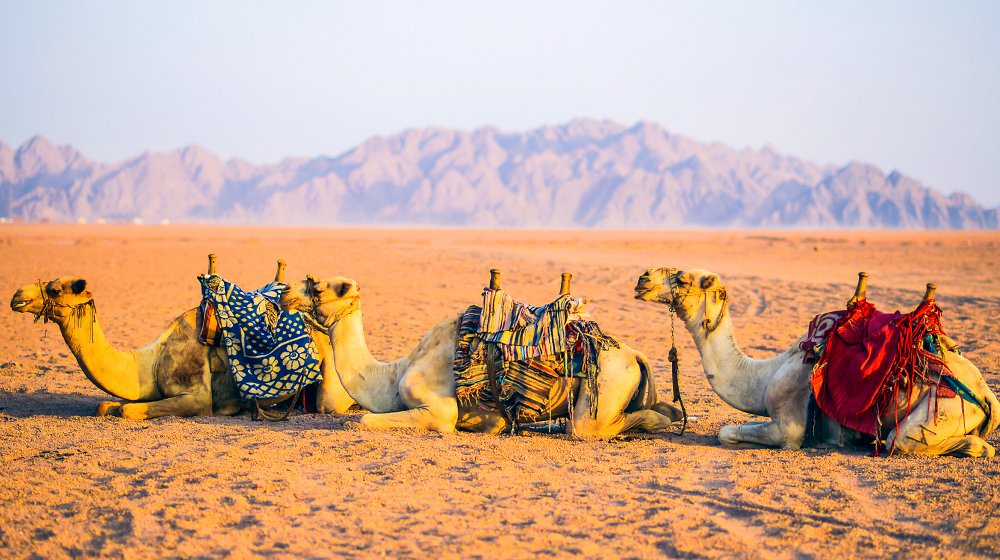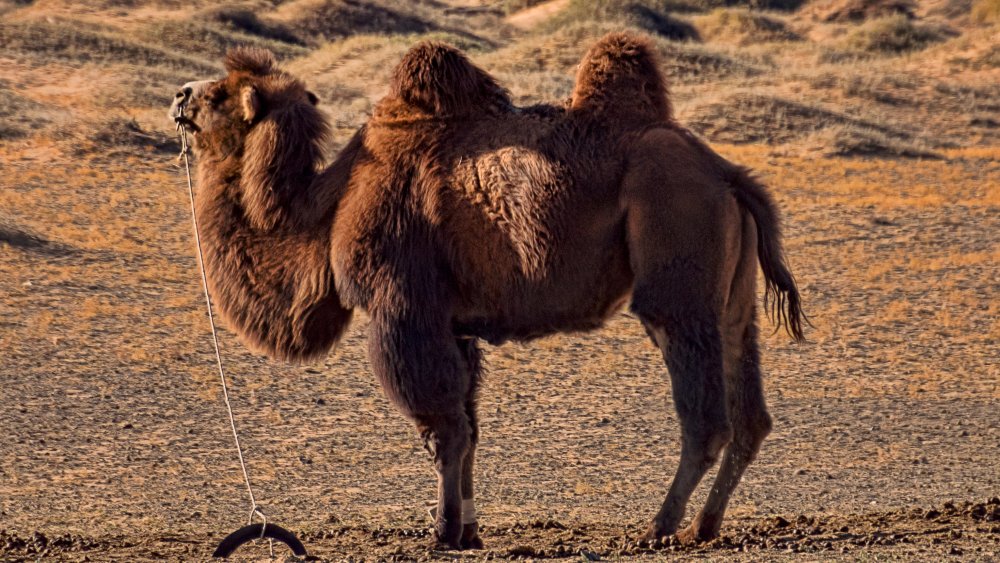The Real Reason Camels Have Humps
Camels are notorious for the humps on their back, so much so that Wednesday, also known as "hump day" is associated with the camel in present-day pop culture. Although they actually originated in North America, camels are most commonly found today in the vast deserts of the Middle East and Africa. Even though Rudyard Kipling's short story How the Camel Got His Hump gives the reason for selfishness and laziness as to why camels have their humps, the humps on their back, in reality, help them survive.
You may or may not have heard the myth that camel's humps are filled with water so that they can survive long days walking through the desert. However, that's not true. Rather than storing water, camels' humps actually function as a source for storing fat so the desert animals can go days without eating if they have to, according to Live Science.
The straw that broke the camel's back
A camel can carry up to 80 pounds of fat in the form of a hump on its back. If the animal needs food, it can use this "emergency food source" for energy. Camel fat is loaded with fatty acids, vitamins, and minerals, according to Business Insider. "Just one tablespoon contains 40% of your daily vitamin B12 needs and three times the amount of oleic acid than coconut oil, a superfood staple," Business Insider says.
Depending on the species, a camel will have one hump if it is a Dromedary or Arabian camel and two humps if it is a Bactrian camel. Once a camel uses all the fat and energy in their hump (or humps), the hump itself will shrink, flop over, and hang at the camel's side, according to BBC Wildlife. However, the day after a camel uses all of its hump's fat, the hump usually goes back upright. So technically, it's not the straw that broke the camel's back, but rather, a full stomach.

